All products featured are independently chosen by us. However, SoundGuys may receive a commission on orders placed through its retail links. See our ethics statement.
Apple AirPods Pro vs Samsung Galaxy Buds Live
Published onMay 20, 2022
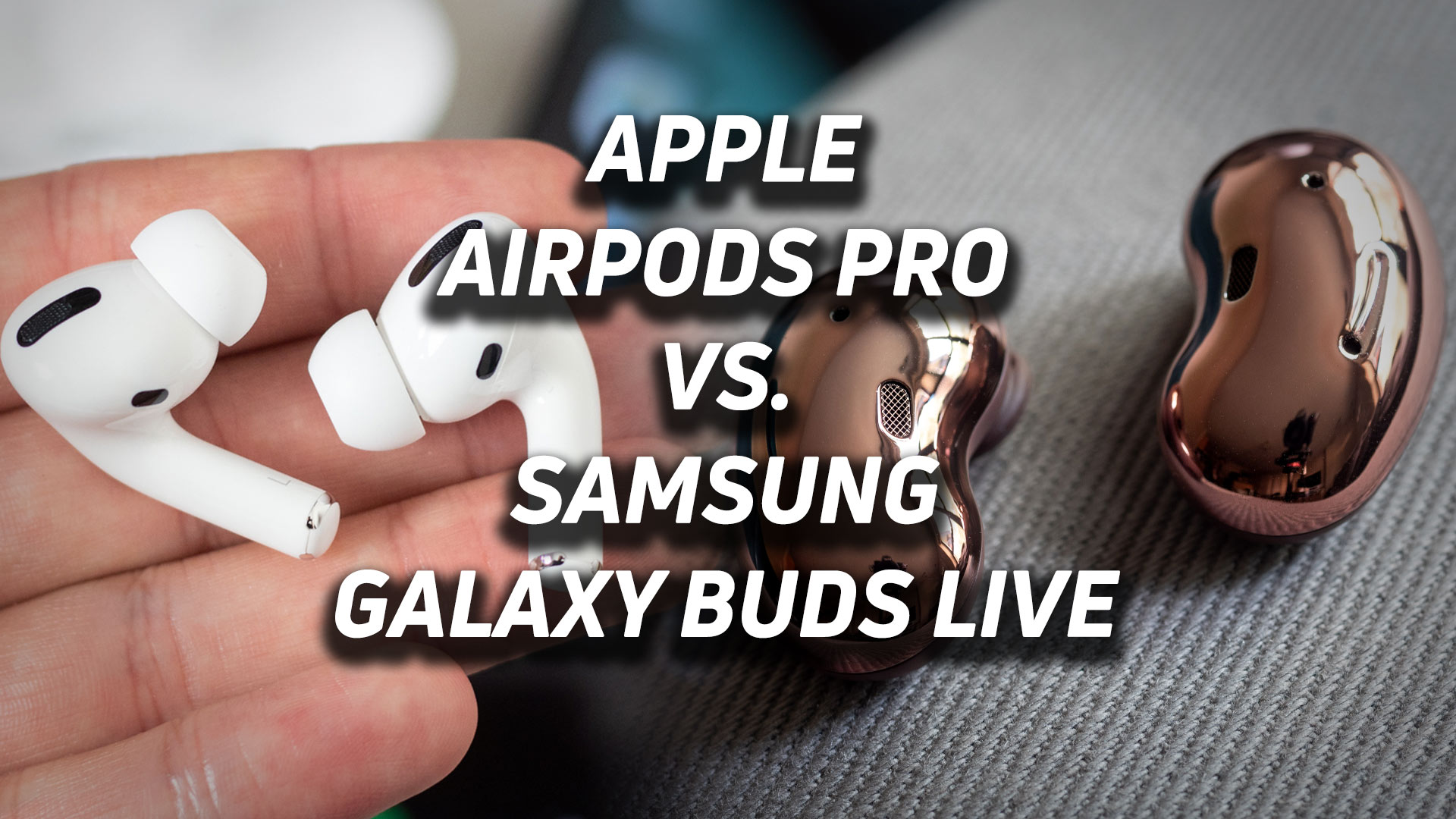
Samsung recently released the new Samsung Galaxy Buds Live. These bean-shaped earbuds offer active noise cancellation, pitting them directly against the Apple AirPods Pro. But which is ultimately better? In this Apple AirPods Pro vs Samsung Galaxy Buds Live piece, we’ll be comparing all the things that separate these two true wireless earbuds.
New product: See our Apple AirPods Pro (2nd generation)
Editor’s note: This post was updated on May 20, 2022, with updated formatting and to answer frequently asked questions.
The Samsung Galaxy Buds Live has a very unique shape
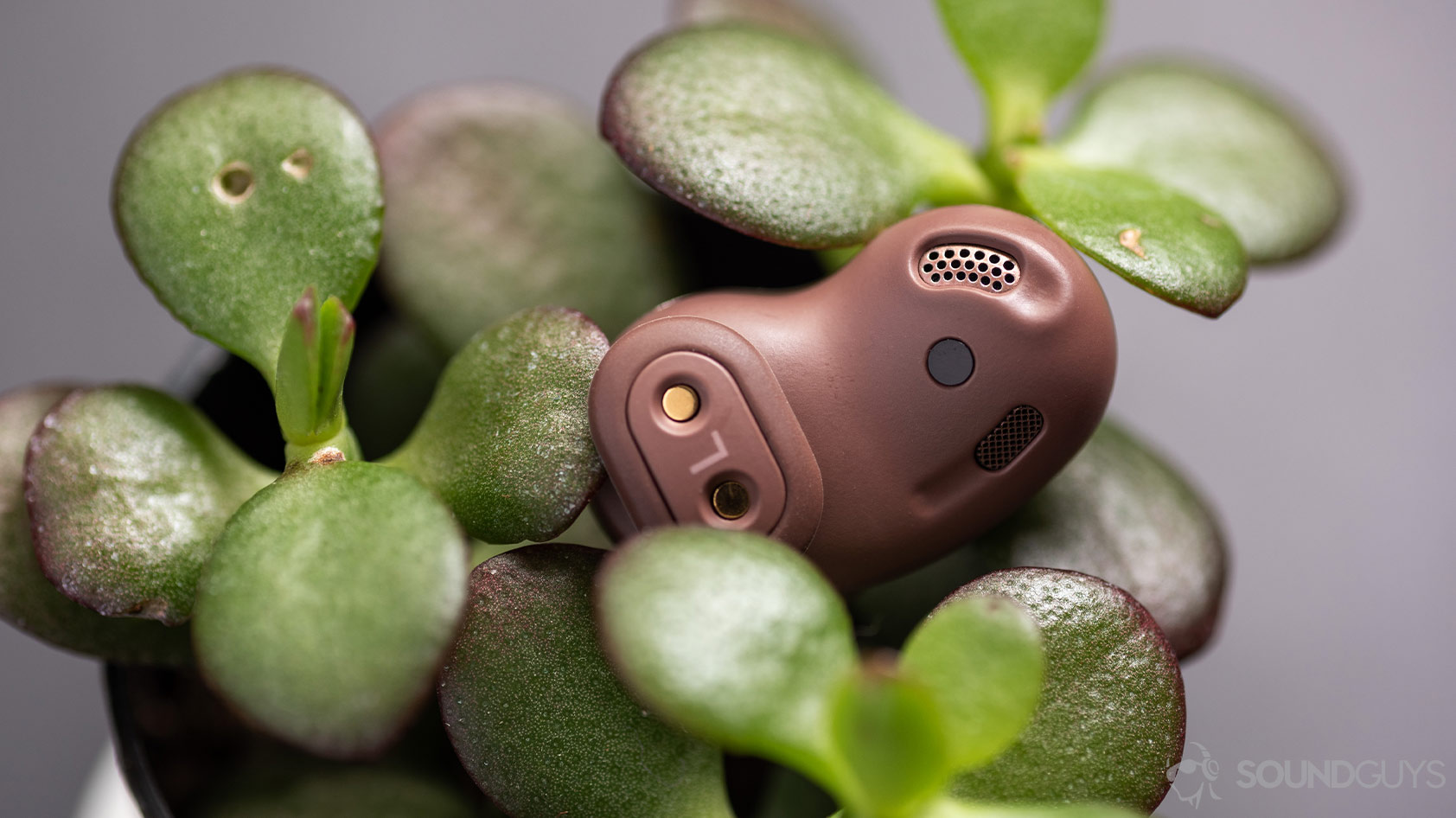
Let’s start with the obvious. The Samsung Galaxy Buds Live, also known as the “Galaxy Beans,” has an unprecedented shape. They are one-size-fits-most earbuds shaped like kidney beans and they don’t have any ear tips. This unconventional design is meant to ensure stability, and it does. The Galaxy Buds Live sit snugly in the ear and didn’t fall out when Lily was rock climbing and jumping around during testing. However, they can become uncomfortable after wearing them for too long, but there are both small and large-sized ear stays that can be switched out to find the right size and try to combat this discomfort. It takes some practice to put in the Samsung Galaxy Buds Live correctly, but once you learn how to it becomes simple. When you’re not using your beans, you can store them in the jewelry box-shaped charging case where they are held in place by magnets.
They can become uncomfortable after wearing them for too long.
The Apple AirPods Pro has a different shape entirely with angled stems that make them easy to put in and remove. They come with three ear tip options to ensure a stable fit, but they stick out from the ears more than the Galaxy Buds Live due to that stem so their stability is less ensured. However, you can do a fit test in your Bluetooth settings to help determine if you’re wearing the right size ear tips if you’re using an iOS device. The AirPods Pro’s shape is also slightly more comfortable than the Galaxy Buds Live and doesn’t cause any pain after long listening sessions. Plus, they come with their own sleek charging case.
Which fit you prefer depends on what you’re looking for: if you don’t like the suction created by sealed ear canals, the Galaxy Buds Live is the way to go. However, if you don’t want to worry about pain kicking in during long listening sessions, the AirPods Pro is for you.
Apple AirPods Pro vs Samsung Galaxy Buds Live: Onboard touch controls and software features
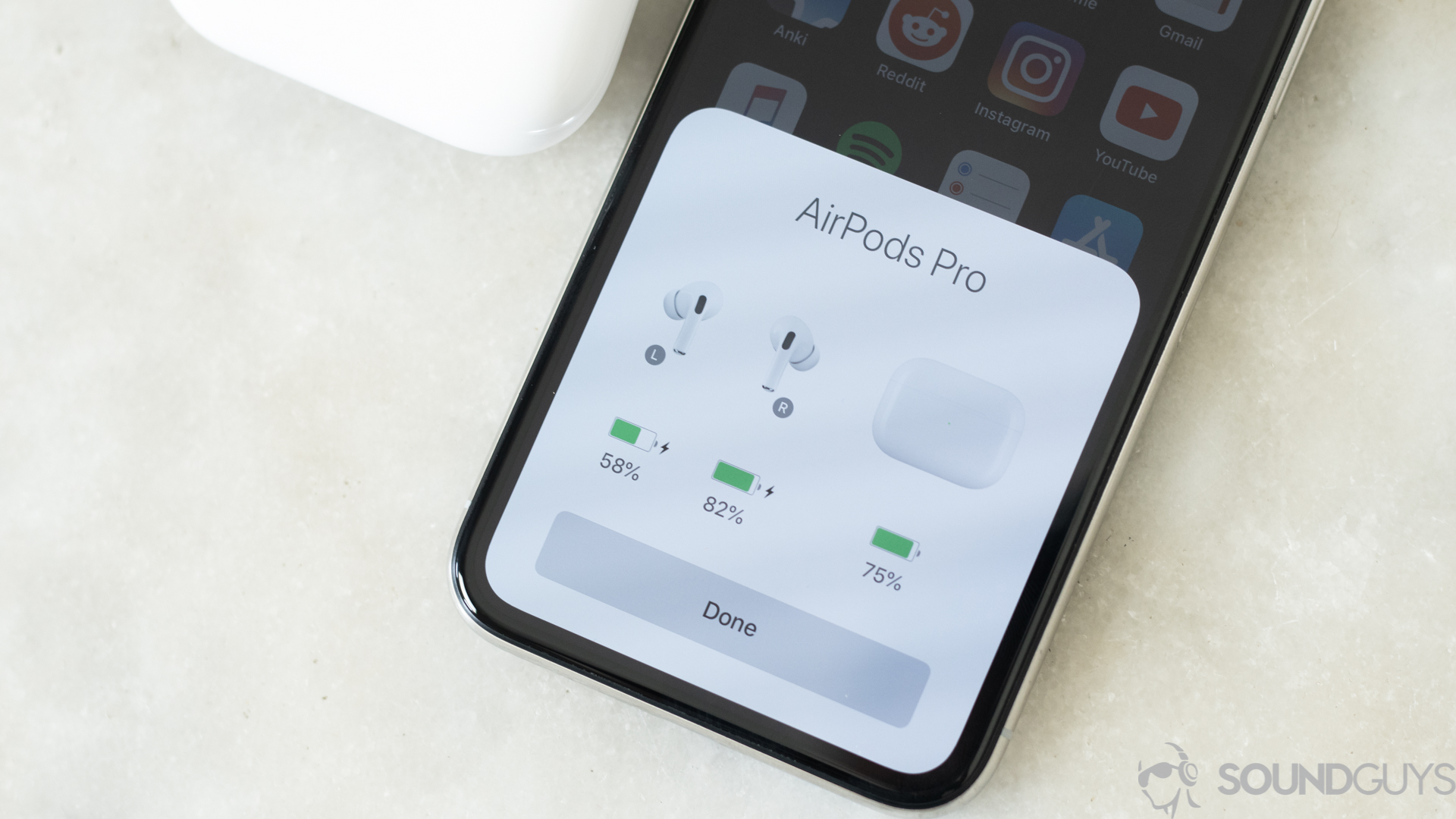
Upon opening the Apple AirPods Pro case a card will pop up on your iPhone for easy connection. This is not available on Android devices. However, with the Samsung Galaxy Buds Live you have just as streamlined of a connection process with your Android device as the AirPods Pro does with an iOS device. Both the AirPods Pro and the Galaxy Buds Live use Bluetooth 5.0, and unfortunately neither support Bluetooth multipoint. However, the AirPods Pro has Apple’s H1 chip integration, so once you connect them to one of your Apple devices they connect through iCloud to all your other devices as well. This allows Apple to make switching between Apple products fairly easy. With the Samsung Galaxy Buds Live, any switching between devices has to be done manually.
When it comes to Bluetooth codecs the Apple AirPods Pro support only one: AAC. The Samsung Galaxy Buds Live also supports AAC making it compatible with iOS, but being a Samsung product they also support the Samsung Scalable Codec which is compatible with Samsung phones. Unfortunately for non-Samsung Android users, there is no other high-quality option codec-wise, either set of earbuds performs the same since they’ll both use AAC with the device they’re connected to.
The Samsung Galaxy Buds Live has ear detection functionality on both Android and iOS.
One other feature worth mentioning is auto-pause and auto-resume. If you have an iPhone the AirPods Pro does this when you remove and re-insert your earbuds. The Samsung Galaxy Buds Live also has ear detection functionality on both Android and iOS, but can only auto-pause and won’t auto-resume when placed back in the ear.
The Samsung Galaxy Buds Live have Dual Audio and Spotify integration
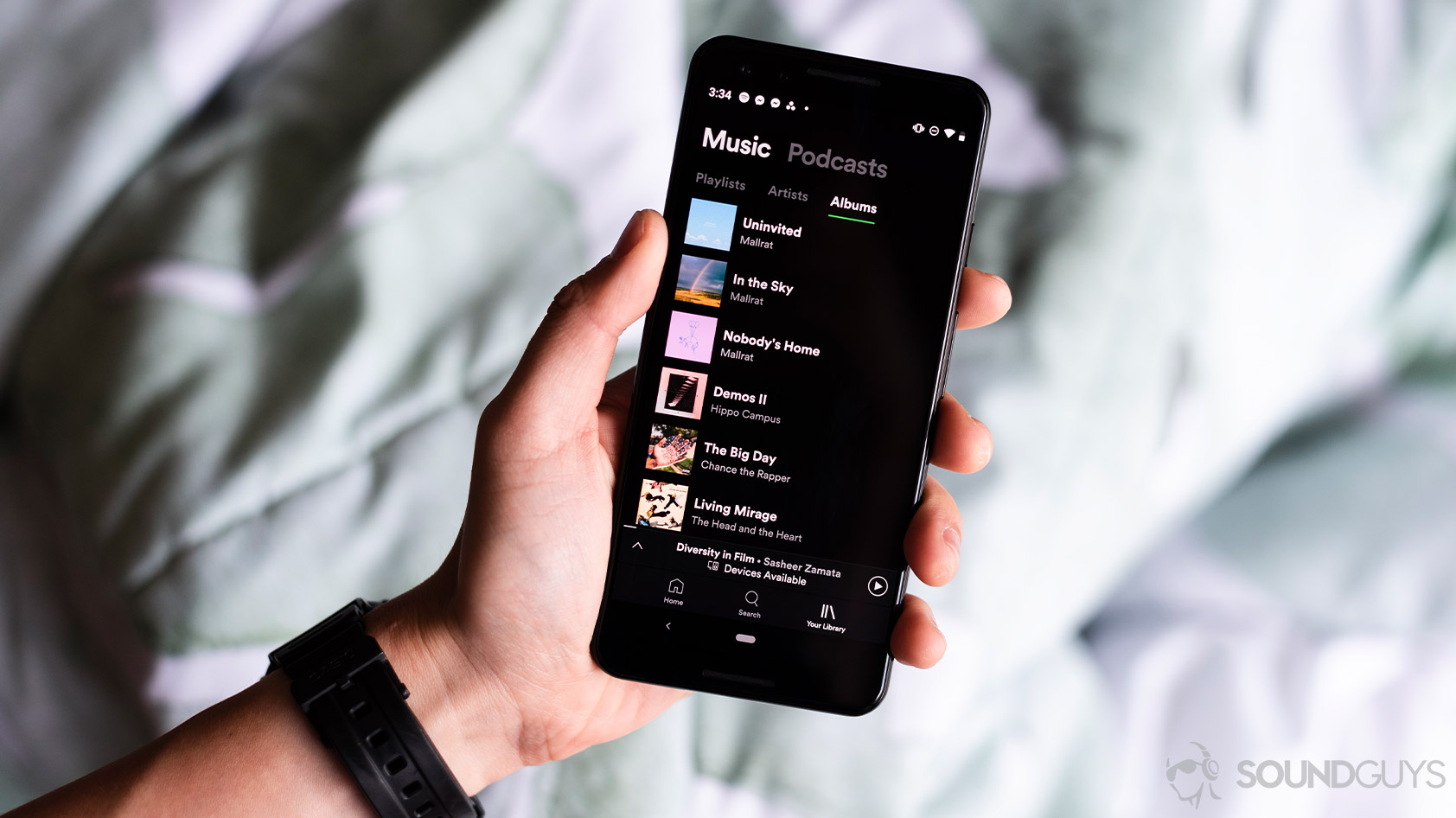
The Samsung Galaxy Buds Live have touch controls that include play and pause, skipping tracks, and answering calls on either earbud. The touch controls on the Galaxy Buds Live can be remapped through the Samsung Galaxy Wearable app, but that is if you decide you’re comfortable using the app. A long press can be enabled for turning on and off the active noise canceling, controlling the volume, activating Spotify if you have a Samsung device, or accessing your smartphone’s native voice assistant. If you have a Samsung phone, the beans also have direct voice access to Bixby, Samsung’s own smart assistant, but you can disable the voice activation to preserve battery life. The Samsung Galaxy Wearable app also has Galaxy Labs which let you try out experimental features such as an ambient sound mode, and you can EQ your sound signature settings in the app.
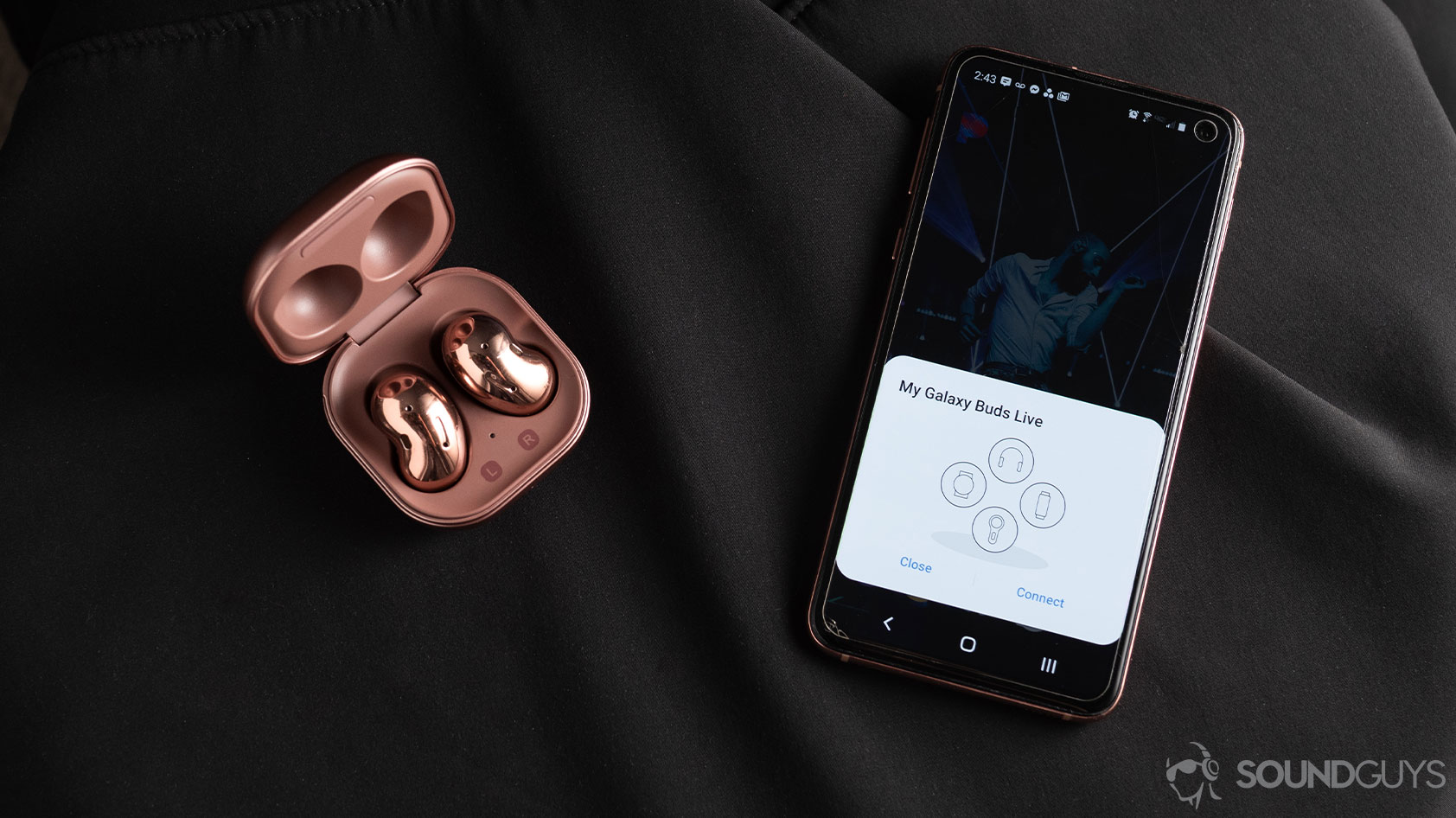
The Samsung Galaxy Buds Live boasts Dual Audio, meaning you can connect two pairs of Galaxy Buds Live earbuds to one Samsung device for simultaneous listening. The AirPods Pro has this same feature but for Apple devices.
The Apple AirPods Pro’s features include Spatial Audio and battery optimization
The AirPods Pro has the same touch controls on both the left and right earbud. If you want to activate transparency mode, which allows for ambient noise to leak in so you can remain aware of your surroundings or chat with someone on the way to class, just long-press the stem of either AirPod. To switch back to ANC mode all you need to do is long press the stem again. Press the stem once to play or pause music, double press to skip forward a song, and triple press to skip back a song. There are no touch controls to change the volume, which is super annoying, but you can talk to Siri to adjust the volume if you have an iPhone.
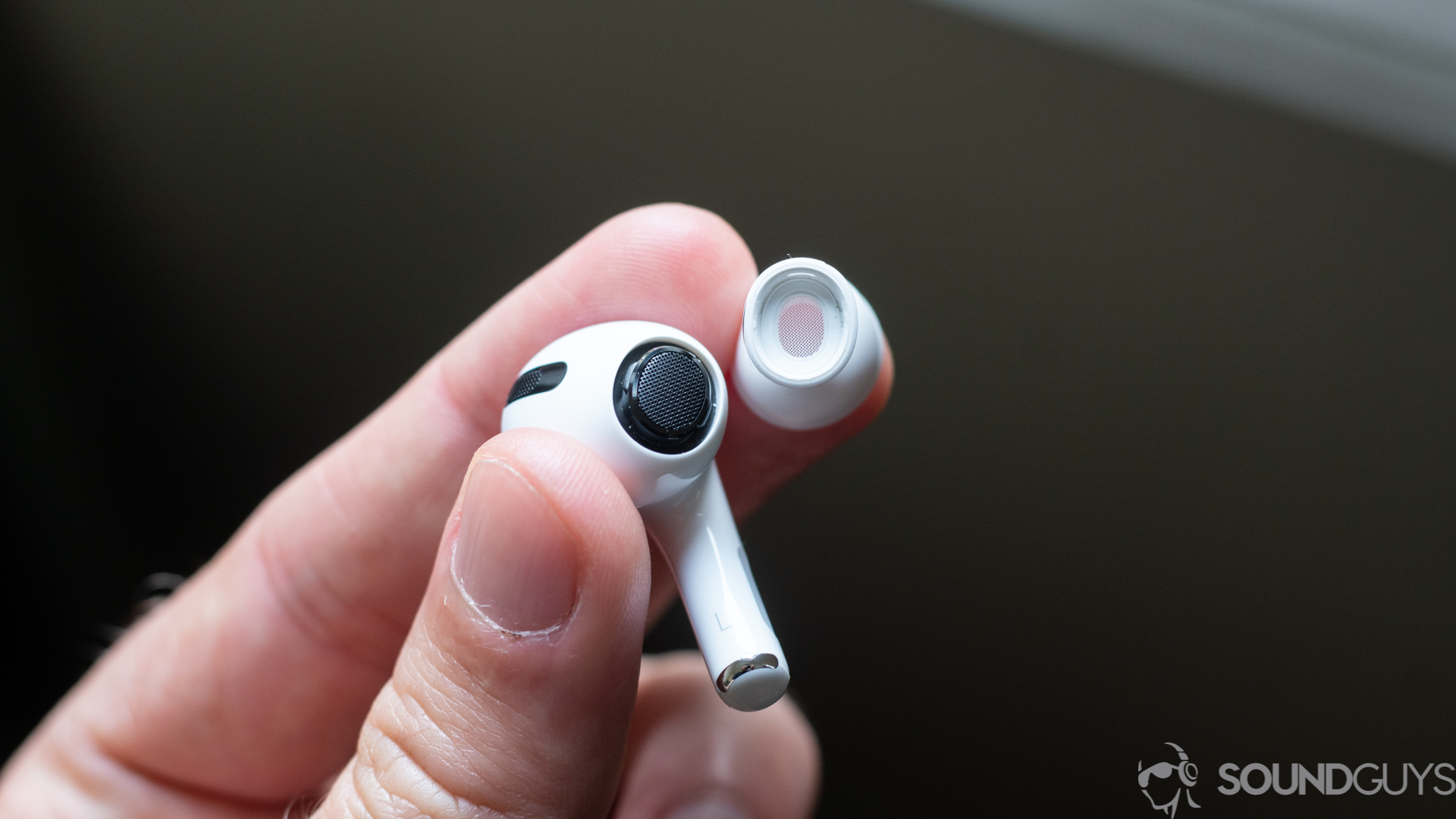
On iOS, you can control the settings of your AirPods Pro from your device’s Bluetooth settings. In addition to taking a fit test, you can rename your AirPods Pro, toggle ANC on or off, and customize the onboard controls of each earbud. Additionally, your AirPods sound signature adjusts to the shape of your ears, but you cannot adjust the EQ settings manually. If you have an Android phone, all the touch controls still work, but you don’t have easy smart assistant access unless you download a third party app.

iOS 14 didn’t just update iPhones—it also updated the Apple AirPods Pro. Unfortunately, as is the case with many Apple products, these software updates are only available to people who use iOS devices. The updates include Spatial Audio, which mimics the effects of surround sound, as well as battery optimization. It’s no secret that true wireless earbuds have dubious long-term battery life, largely because every time they are placed in their cases their batteries are being charged to the max. The iOS 14 update’s battery optimization feature works by learning your daily charging routine and refraining from charging past 80% until necessary. As for the Galaxy Buds Live, its firmware can be updated regardless of your operating system.
The Apple AirPods Pro wins this round, but not without careful consideration of the lack of ability to control volume from the earbuds themselves. But the AirPods Pro simply has more features than the Galaxy Buds Live, especially if you have an iPhone.
The Apple AirPods Pro has much better noise canceling and passive isolation
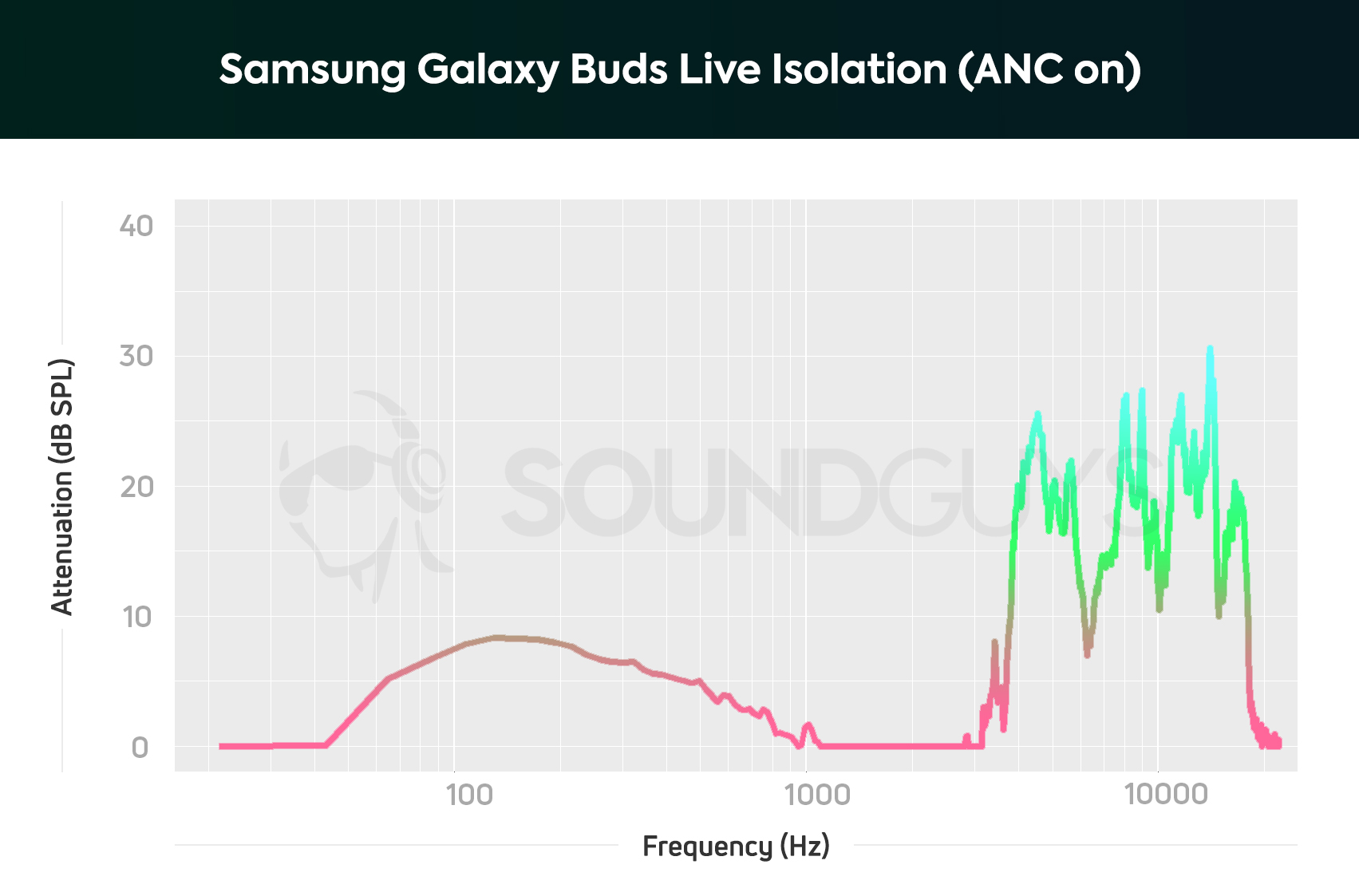
The Samsung Galaxy Buds Live doesn’t have ear tips which is pretty strange for active noise canceling earbuds. The noise cancellation’s effectiveness depends entirely on the shape and size of the wearer’s ears. The ANC does work to a certain extent—low-frequency sounds are quieted to about 1/2 their original volume. However, due to the earbuds not creating a seal on your ear canals, they have almost zero passive isolation. This can be nice if you don’t like the feeling of clogged ear canals or want to be able to listen to ambient noise through your buds but it makes the noise canceling unreliable.
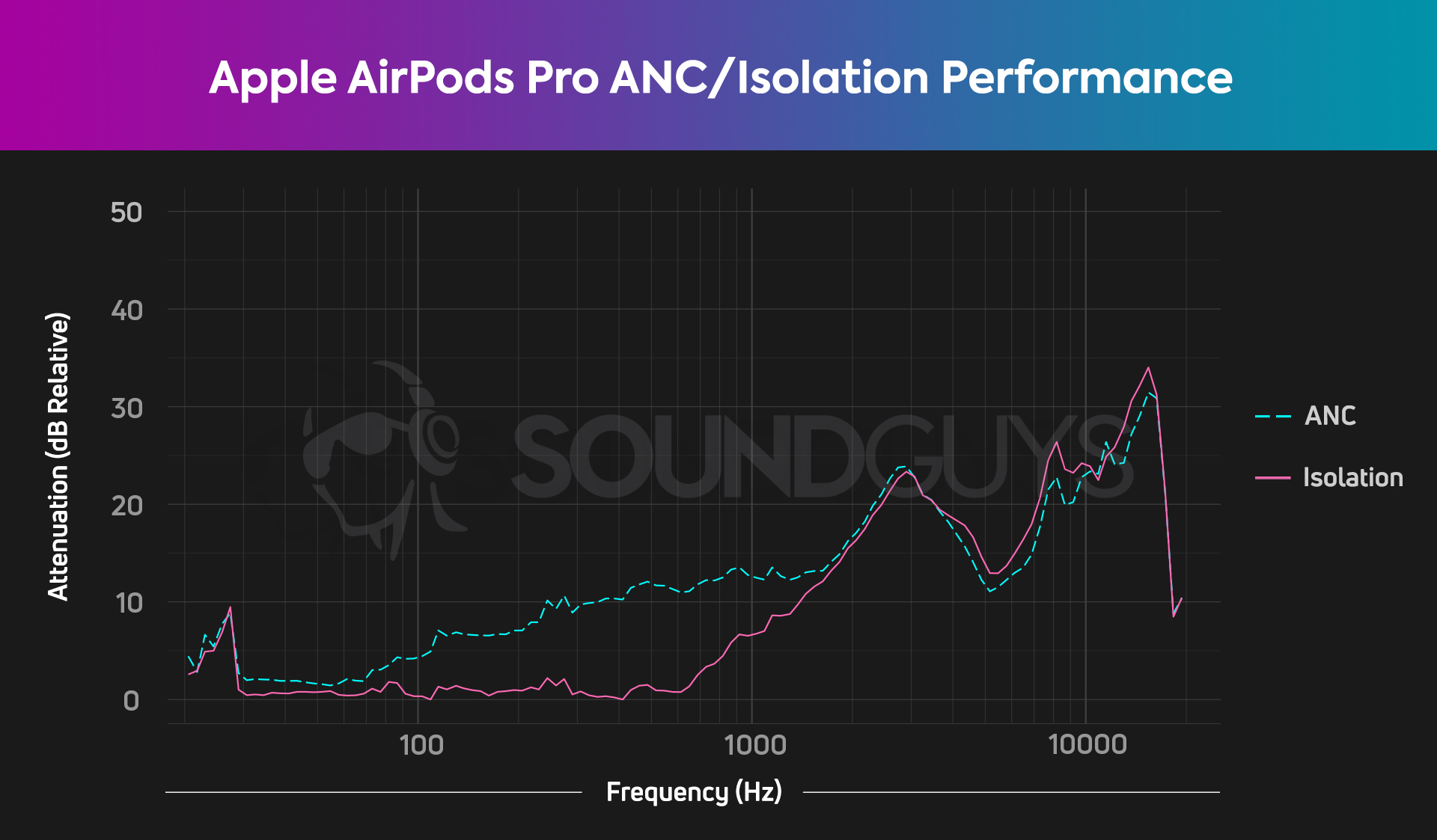
The Apple AirPods Pro, on the other hand, yields pretty consistent noise canceling results so long as the wearer has the proper ear tips in. However, some people have reported that updating the firmware of their AirPods Pro has reduced the quality of its active noise cancellation. If you find that your AirPods Pro have worse ANC than they started with, try the following:
- Place your AirPods Pro in their case
- Factory data reset your AirPods Pro by holding the setup button for 15 seconds, or until the light flashes amber three times, then turns white
- Re-charge the carrying case, and then re-attempt the firmware update
- If the problem persists, contact Apple support
Unfortunately ANC degradation is a common problem with Bose, Sony, and other Bluetooth headsets requiring updates over Bluetooth—not just Apple.
The Samsung Galaxy Buds Live has better battery life
The Samsung Galaxy Buds Live last 5 hours, 15 minutes with ANC enabled and 75dB(SPL) volume. The charging case contains 2.5 additional charging cycles if you’re using ANC. If you aren’t using ANC with the Galaxy Buds Live the battery life is closer to 8 hours and the charging case will hold 2.63 additional charging cycles. Similarly, the Apple AirPods Pro last 5 hours, 6 minutes with ANC enabled and 75dB(SPL) volume, and topping them off in the charging case allows for 24 total hours of listening time. The AirPods Pro’s charging case charges via lightning USB cable whereas the Galaxy Buds Live’s case is charged via USB-C, but both sets of earbuds are also compatible with Qi wireless charging. On top of all that, the Galaxy Buds Live can be charged via Wireless PowerShare by placing them on your Samsung Galaxy phone.
With the new iOS14 update, iPhone users have access to battery status notifications as well as a battery optimization feature for their AirPods Pro. The AirPods Pro will now learn your daily charging and usage routine and refrain from charging past 80% except when necessary. This will help improve the long term battery life of your AirPods Pro. Both the Samsung Galaxy Buds Live and Apple AirPods Pro support fast charging. Because of the battery optimization feature, the AirPods Pro win this round, but only for iPhone users.
Apple AirPods Pro vs Samsung Galaxy Buds Live: Sound quality
Sound quality largely depends on the quality of the isolation and active noise cancellation due to the way they prevent auditory masking. Because the isolation of the Samsung Galaxy Buds Live is so inconsistent across users, I can’t in good faith recommend that they have as good audio quality as the AirPods Pro. However, the most reproducible result of our testing shows that the Galaxy Buds Live has a fairly consumer-friendly frequency response. The bass emphasis can shroud sounds in the mid ranges, such as vocals, but you can always tune the sound signature in the Samsung Galaxy Wearables app. Just keep in mind that the lack of a sealed ear canal can make for varying results, and if there’s a lot of ambient noise around you, the clarity and detail of your music will be lost.
The Apple AirPods Pro, on the other hand, use a form of DSP to tune the sound signature to the shape of the user’s ear. Its frequency response has less bass emphasis, making it more accurate but less consumer-oriented. The mid-range response is neutral-leaning as well, and so vocals are clear and detailed. The main emphasis in the AirPods Pro’s frequency response is in the high frequencies, and this can produce occasional harshness with string instruments or other high-frequency sounds.
Which has better microphone quality?
The Samsung Galaxy Buds Live uses a three-microphone array. One of these microphones detects jawbone vibrations and subsequently uses bone conduction to transmit clear audio while reducing background noise. It is easy to understand someone speaking through the Galaxy Buds Live, and when it comes to true wireless earbuds, that’s all you could really ask for in a microphone array.
The Apple AirPods Pro also have clear microphone quality. There’s no fancy bone conduction with these, but they still produce clear, understandable speech. The bass attenuation helps reduce the proximity effect of these buds, but consonants still come out a little bit “muddier” with the AirPods Pro than the Galaxy Buds Live. Still, we’ll leave this up for you to decide in our poll down below!
Apple AirPods Pro microphone sample:
Samsung Galaxy Buds Live microphone sample:
Which microphone do you think sound better?
Should you buy the Apple AirPods Pro or Samsung Galaxy Buds Live?
If you haven’t been keeping track, the winner of Apple AirPods Pro vs Samsung Galaxy Buds Live showdown has to go to the Apple AirPods Pro. Mainly due to the difference in isolation and ANC quality. Without a sealed fit it’s just impossible to have top-notch noise canceling, so the Samsung Galaxy Buds Live doesn’t stack up.
However, whether the AirPods Pro or the Galaxy Buds Live are for you comes down to a few additional things such as what OS you are using and if you just prefer a specific feel. For example, if you have an Android, I don’t recommend you get the Apple AirPods Pro. It’s not that the AirPods Pro performs poorly with Android’s operating service, but there are so many features that Android users miss out on with these earbuds. The lack of high-quality codecs besides AAC, software updates, easy device-switching, and auto-pause and auto-resume functionality are only a few examples.
Similarly, if you don’t have a Samsung phone, you’re going to miss out on a lot of features that the Galaxy Buds Live offer, such as Dual Audio and streamlined Spotify access. But some people just really don’t like the feeling of clogged ears that come with ear canal-sealing earbuds. If this is the case but you still want decent active noise cancellation on your earbuds, the Samsung Galaxy Buds Live is an excellent choice.
Alternatives to the Apple AirPods Pro and Samsung Galaxy Buds Live
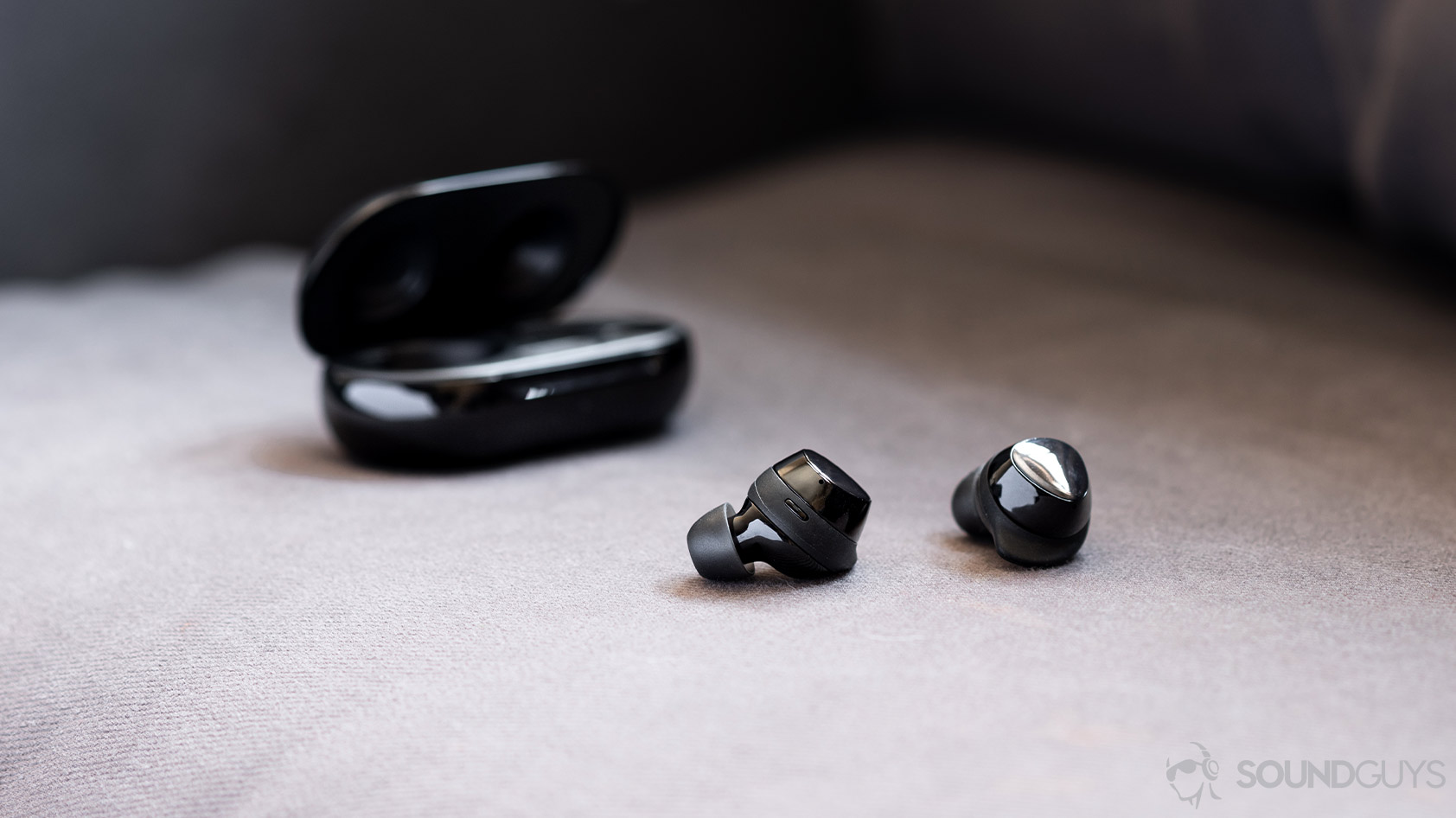
If you want non-sealing true wireless earbuds but you don’t need ANC, try the original Apple AirPods. Alternatively, if you want Samsung earbuds but the beans just don’t do it for you, the Samsung Galaxy Buds Plus has better passive isolation due to the sealing ear tips and many similar features as the Galaxy Buds Live, such as Spotify integration.
The Sony WF-1000XM3 is another great option for people who want a reliable of pair of ANC true wireless earbuds. It comes with a variety of ear tips to ensure a proper seal, which contributes to the earbuds’ amazing isolation and active noise canceling performance. The WF-1000XM3 also provides great sound quality, a decent microphone, and deep software integration via the Sony Headphones Connect app.
The Sennheiser Momentum True Wireless 2 are another powerful yet expensive pair of ANC true wireless earbuds. They have Sennheiser’s usual great audio quality, an IPX4 rating, effective ANC, and additional features through the Sennheiser Smart Control app.
Of course, you can always skip the earbuds and go the over-ear route with Apple’s new AirPods Max. These wireless headphones have all the same convenience features of the AirPods Pro, including the Apple H1 chip. The AirPods Max have the best raw noise canceling performance on any headphones we’ve tested to date, and their sound quality is excellent as well.
Frequently asked questions about the Apple AirPods Pro and Samsung Galaxy Buds Live
ANC works best to attenuate ambient noise sounds, such as a fan, heating unit, or airplane engine. It’s not as good at preventing quick, irregular noise such as the sound of a person talking. Unless you’re also playing loud music through the earbuds, you’ll likely still be able to hear people around you talking.
This will depend on your listening preferences. Since the regular AirPods don’t have a seal from ear tips and don’t have ANC, they aren’t very enjoyable to use in noisy environments. If you only plan on listening in quiet environments, then the AirPods (3rd generation) might be fine for your needs.